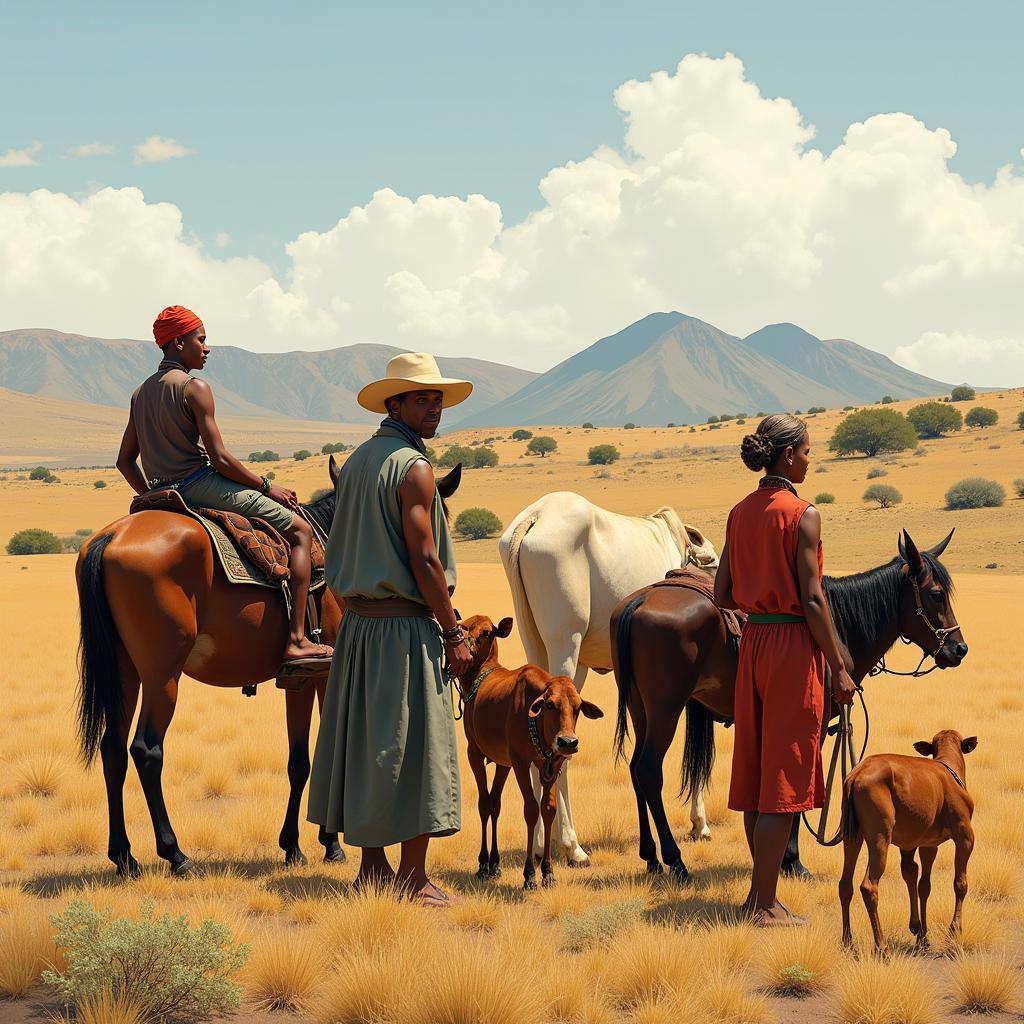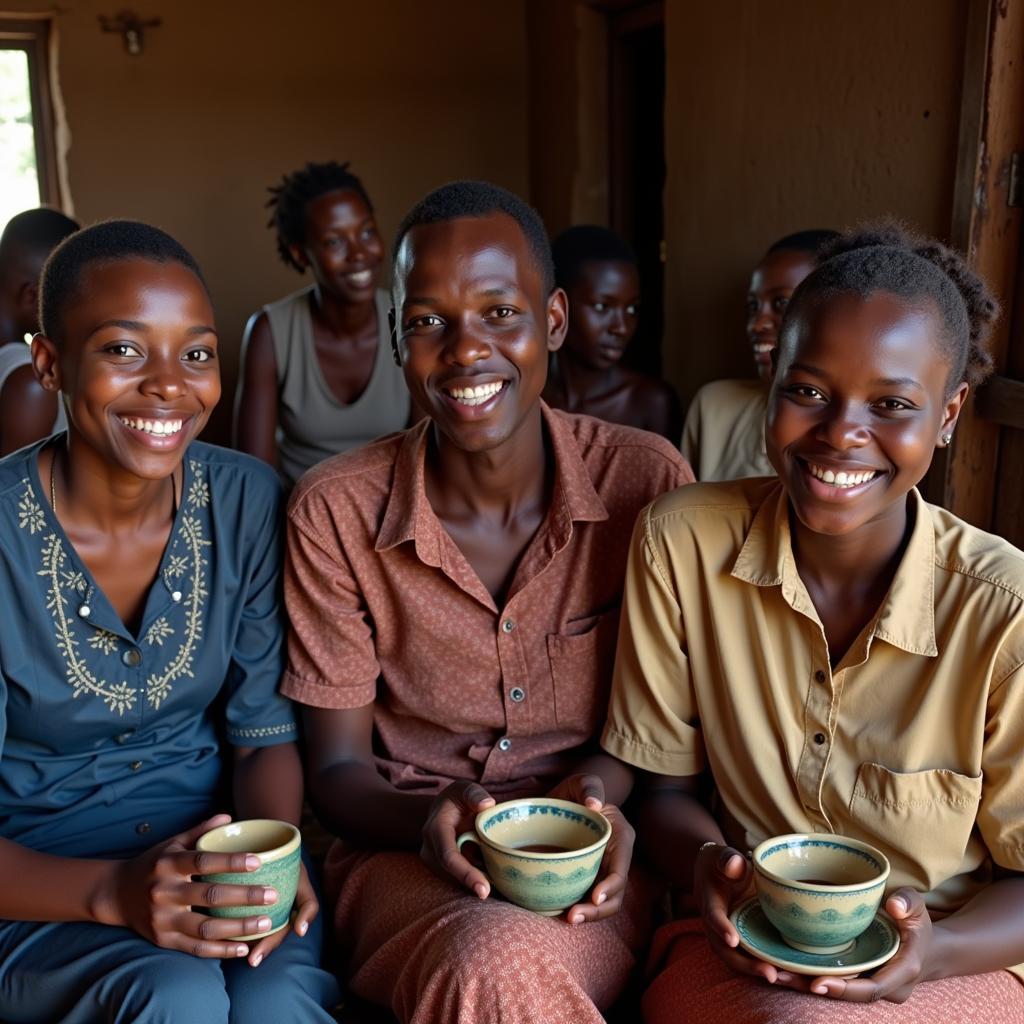Understanding the Khoikhoi: Beyond the Term “African Hottentot Woman”
The term “African Hottentot Woman” carries a heavy historical baggage, reflecting a colonial past rife with misrepresentation and exploitation. This article aims to delve deeper than this outdated and offensive term, exploring the rich culture, history, and resilience of the Khoikhoi people, particularly their women, who played and continue to play a vital role in their communities.
Unveiling the Rich Tapestry of Khoikhoi Culture and the “African Hottentot Woman” Myth
The Khoikhoi, often mistakenly referred to as “Hottentots,” are an indigenous pastoralist people of southwestern Africa. Their history, intertwined with the land and their livestock, has been tragically impacted by colonialism. The term “Hottentot,” derived from the Dutch perception of the Khoikhoi language’s clicking sounds, became a derogatory label used to justify their subjugation. To understand the Khoikhoi, we must move beyond this colonial lens and recognize the complexity and richness of their culture. Khoikhoi women held significant positions within their society, playing crucial roles in economic activities, decision-making, and cultural preservation.
The Strength and Resilience of Khoikhoi Women
Historically, Khoikhoi women were active participants in their communities’ economic and social life. They managed livestock, gathered food, and played a key role in trade. Their knowledge of the land and its resources was essential for the survival of their communities. They also held important positions in spiritual and cultural practices. Despite facing immense challenges during colonial times, Khoikhoi women demonstrated incredible resilience, preserving their traditions and fighting for their rights.
The Impact of Colonialism on Khoikhoi Women
The arrival of European colonists brought about devastating consequences for the Khoikhoi people, particularly their women. Colonial policies led to land dispossession, forced labor, and cultural suppression. Khoikhoi women were subjected to various forms of violence and exploitation. However, even in the face of such adversity, they continued to resist colonial rule and maintain their cultural identity. Their stories of survival and resistance are a testament to their strength and determination.
 Khoikhoi Family in Pastoral Life
Khoikhoi Family in Pastoral Life
Khoikhoi Language, Art, and Traditions: A Legacy Carried by Women
Khoikhoi language, with its unique clicking sounds, is a testament to the rich linguistic diversity of Africa. Khoikhoi art, often expressed through intricate beadwork, rock paintings, and storytelling, reflects their deep connection to the land and their spiritual beliefs. These cultural traditions have been largely preserved and passed down through generations by Khoikhoi women. They play a vital role in ensuring the continuity of their cultural heritage.
Understanding the Khoikhoi Language’s Clicking Sounds
The distinctive clicking sounds of the Khoikhoi language have fascinated linguists for centuries. These sounds, integral to the language’s structure, are produced by manipulating the tongue against the palate and teeth. They add a unique rhythmic quality to the spoken word.
Reclaiming the Narrative: Moving Beyond the Term “African Hottentot Woman”
It is crucial to understand that the term “African Hottentot woman” is deeply offensive and perpetuates harmful stereotypes. We must actively work towards replacing this outdated terminology with respectful and accurate language. Learning about the true history and culture of the Khoikhoi people, especially the important contributions of their women, is essential for promoting understanding and respect.
In conclusion, understanding the Khoikhoi people requires moving beyond the offensive term “African Hottentot woman” and acknowledging their rich history and vibrant culture. Khoikhoi women, with their resilience, strength, and deep connection to their traditions, have played and continue to play a pivotal role in their communities. Let us strive to learn more about their stories and contribute to a more accurate and respectful representation of their heritage.
FAQ
- What is the correct term to use instead of “Hottentot”? Khoikhoi or Khoekhoe.
- What is the significance of livestock in Khoikhoi culture? Livestock represents wealth, status, and cultural identity.
- What are some examples of Khoikhoi art? Beadwork, rock paintings, and storytelling.
- How were Khoikhoi women affected by colonialism? They faced land dispossession, forced labor, and cultural suppression.
- What role do Khoikhoi women play in preserving their culture? They transmit traditions, language, and knowledge to future generations.
- How can I learn more about Khoikhoi culture respectfully? Research reputable sources, visit museums, and engage with Khoikhoi communities directly when appropriate.
- Why is the term “African Hottentot woman” offensive? It is a derogatory term rooted in colonialism and carries harmful stereotypes.
For further support, please contact us at Phone: +255768904061, Email: kaka.mag@gmail.com, or visit our office at Mbarali DC Mawindi, Kangaga, Tanzania. We have a 24/7 customer service team available to assist you. You can also find related articles on our website such as [Khoikhoi History and Culture] and [The Role of Women in African Societies].


